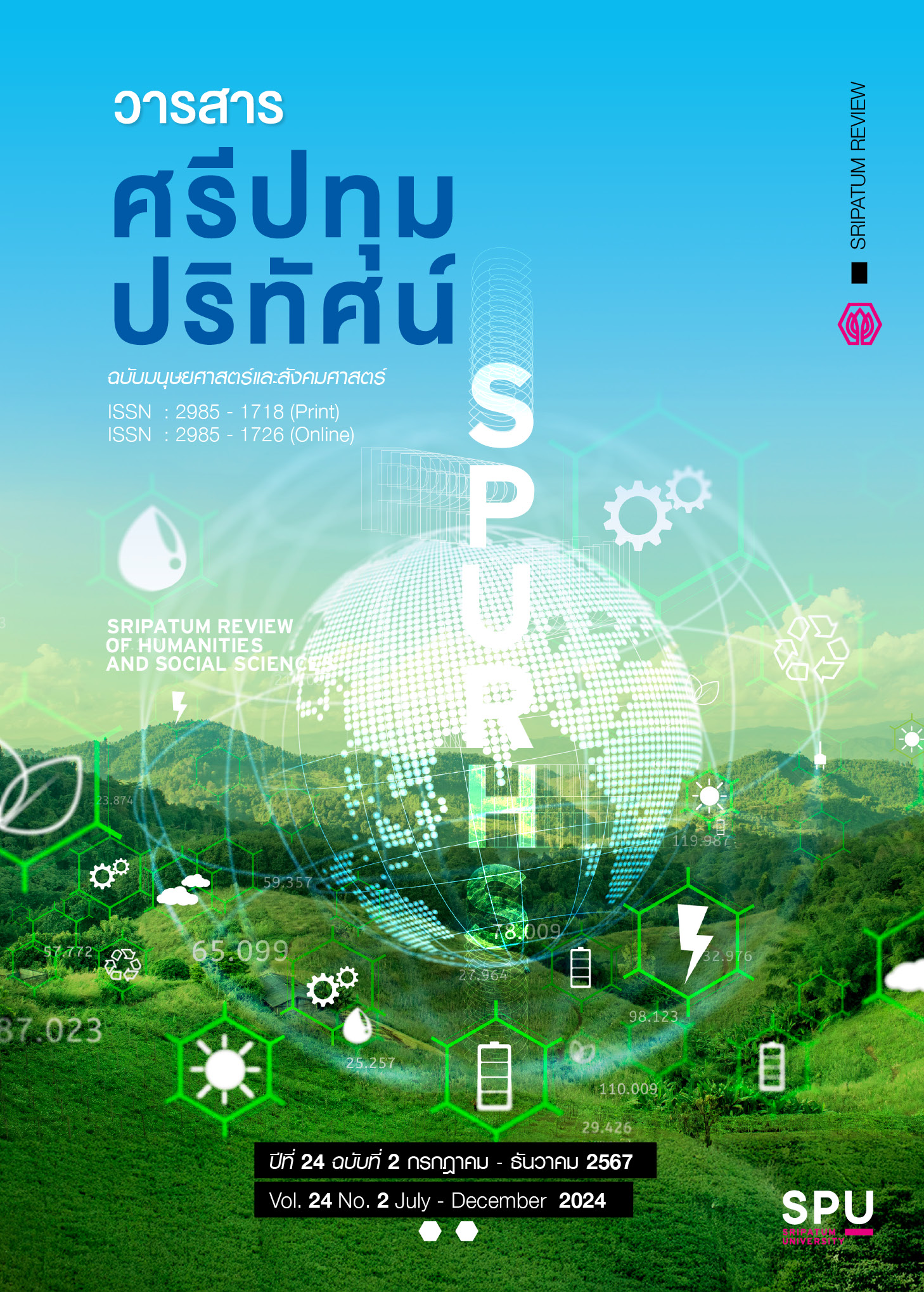Guidelines for Developing The Safety Performance of Airline Operators in Thailand: A Case Study of Thai Airlines
Main Article Content
Abstract
Guidelines for developing the safety performance of airline operators In Thailand: A Case Study of Thai Airlines The objectives are 1) to study the general safety context of Thai airlines and synthesize air safety factors 2) to study the confidence and evaluate the safety performance of Thai airline operators and 3) To propose guidelines for developing and strengthening safety competencies of line workers. Thai National Aviation the study collected data in 3 phases according to the research objectives, is a study of the general safety context of Thai airlines and a synthesis of air safety factors) using qualitative research methods to collect and analyze data obtained from studying secondary data, including related documents and research. Work manual, rules, regulations from online databases or the internet and used quantitative research methods to collect and analyze data obtained from questionnaires in order to achieve the stated research objectives. The results of the study are presented in a descriptive form (Descriptive Analysis) with tables and illustrations. From a sample of 400 were passengers who had used the services of Thai Airways. The nature of the tool used is a questionnaire data analysis The statistics used to analyze important data are as follows: percentage, mean, standard deviation and propose guidelines for developing and strengthening safety competencies of line workers. Thai national aviation in the form of modeling
The research results show that Thailand's aviation industry has standards and strictly complies with international aviation regulations. As well as the results of the analysis of the level of confidence in safety services and confidence in the safety performance of airline operators in Thailand. It was found that the personnel or operators of the airline have the ability to provide services in various areas according to international standards. And from the results of the research, guidelines have been proposed for developing and strengthening safety competencies. By giving importance to mindfulness or aviation studies that Situation awareness by becoming the SAPK for Reliability and Ability Model.
Article Details

This work is licensed under a Creative Commons Attribution-NonCommercial-NoDerivatives 4.0 International License.
1. กองบรรณาธิการสงวนสิทธิ์ในการพิจารณาและตัดสินการตีพิมพ์บทความในวารสาร
2. บทความทุกเรื่องจะได้รับการตรวจสอบทางวิชาการโดยผู้ทรงคุณวุฒิ แต่ข้อความและเนื้อหาในบทความที่ตีพิมพ์เป็นความรับผิดชอบของผู้เขียนแต่เพียงผู้เดียว มิใช่ความคิดเห็นและความรับผิดชอบของมหาวิทยาลัยศรีปทุม
3. การคัดลอกอ้างอิงต้องดำเนินการตามการปฏิบัติในหมู่นักวิชาการโดยทั่วไป และสอดคล้องกับกฎหมายที่เกี่ยวข้อง
References
Cochran, W. G. (1953). Sampling techniques. New York: John Wiley & Sons.
Flin, R., O'Connor, P., & Crichton, M. (2008). Safety at the sharp end: A guide to non-technical skills. Boca Raton, FL: CRC Press.
Geller, E. S. (2001). The psychology of safety handbook. Boca Raton, FL: CRC Press.
Helmreich, R. L., & Merritt, A. C. (1998). Culture at work in aviation and medicine: National, organizational, and professional influences. Aldershot: Ashgate.
International Civil Aviation Organization. (2021). Safety management manual (SMM). International Civil Aviation Organization.
Kaiyawarne, Y. (2017). Basic statistics for research. Bangkok: Chulalongkorn University Press.
Prompinij, O., Wattanapradit, K., & Phra Mahahansa Dhammahaso. (2020). The process of enhancing safety competency of ultralight paramotor pilots based on Buddhist peaceful means. Journal of MCU Peace Studies, 8(Special Issue), 125–139.
Reason, J. (1997). Managing the risks of organizational accidents. Aldershot: Ashgate.
Salas, E., Burke, C. S., Bowers, C. A., & Wilson, K. A. (2001). Team training in the skies: Does crew resource management (CRM) training work? Human Factors, 43(4), 641–674.


